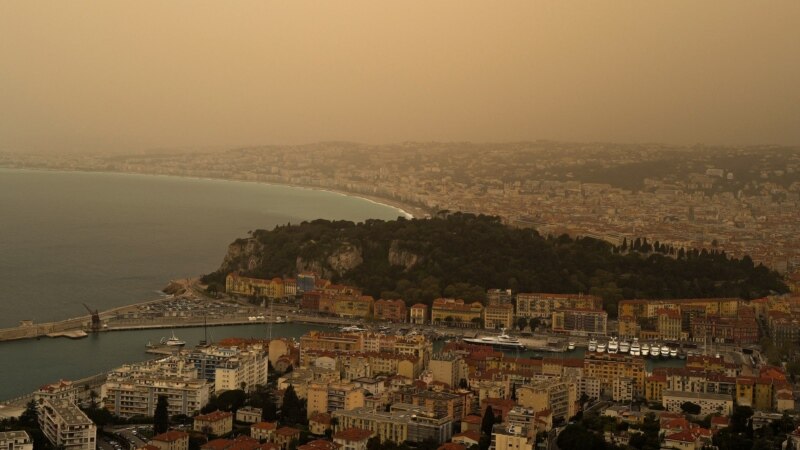A rare haze of Saharan dust blanketed Switzerland and southeastern France on Saturday, turning the sky yellow and triggering health warnings.
The phenomenon, which started in Switzerland on Friday, brought “a significant deterioration in sunlight and visibility. In addition to this, there was also an increase in the concentration of fine particulate matter,” MeteoSwiss posted on X.
Air quality is particularly affected as dust is concentrated below 3,000 meters (about 9,800 feet), with Switzerland’s airCHEck monitoring app showing high pollution levels in a corridor stretching from the southwest to the northeast.
SRF Meteo forecaster Roman Brogli told public radio that calculations estimated the amount of dust to reach about 180,000 tons, twice the level recorded in recent similar events.
In neighboring France, local authorities in the southeast and south announced that air pollution thresholds had been breached on Saturday, and the Hérault department asked residents, especially those with heart or respiratory conditions, to avoid strenuous physical activity.
The Sahara Desert releases 60 to 200 million tons of mineral dust every year. While the largest particles quickly return to Earth, the smallest particles can travel thousands of kilometers.
Sand gives snow its orange color and affects the melting process, especially of glaciers, which shrink as average temperatures rise, because it reduces the ice’s ability to reflect sunlight.
The situation in France and Switzerland is expected to improve on Sunday.
Follow us on Google news ,Twitter , and Join Whatsapp Group of thelocalreport.in
